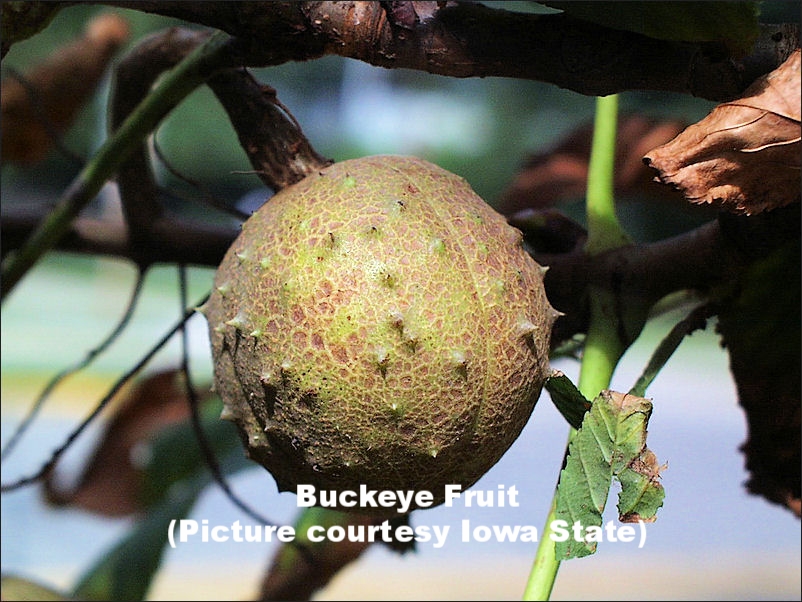Aesculus / Buckeye
Aesculus/Buckeye
A medium-sized tree with an oval to rounded crown. Unique characteristics include palmate compound leaves, terminal candle-like flowers and large globose fruits. The species is somewhat susceptible to leaf scorch in the summer, though the following three cultivars have done well in North Dakota: Prairie Torch ® (an NDSU release), 'Homestead' (from South Dakota), and 'Autumn Splendor'. The largest buckeye in North Dakota is 49 feet tall with a canopy spread of 38 feet.
**Info taken from NDSU Tree Selector**
Aesculus glabra - ohio buckeye
The palmately compound leaves of this tree are unusual and attractive, especially in the autumn when the fall color is a range of yellows, oranges and reds. Greenish-yellow flowers are produced on large panicles in spring followed by large light brown fruit capsules
Height: 20-40'
Spread: 20-40'
Fall Foliage: Yellow orange-red to reddish brown
Exposure: Full Sun
Zone: 3-7
Aesculus x ‘Autumn Splendor’ - autumn splendor
Hybrid buckeye cultivar from the University of Minnesota Landscape Arboretum. Scorch-resistant foliage turns maroon-red in the fall. Yellow-red flowers seldom give rise to fruit.
Height: 35'
Spread: 20'
Fall Foliage: Orange-red to red
Exposure: Full Sun
Zone: 3-7
care: Positives & drawbacks
positives:
Buckeye are a quite hardy tree. Tolerant of sun as well as drought (when established). They have a generally broad and round canopy lending shade to plants around them. In late spring they have a unique panicle flower with tiny florets. Some smaller shrub species are referred to as "bottle-brush" buckeye because of the shape of the flower. This flower when it matures becomes a cluster of nuts. These nuts are a favorite food of wildlife, mostly for squirrels. In addition to their summer contributions they have a spectacular fall color.
drawbacks:
Some of the positives are also the same drawbacks. The flowers while being unique and somewhat fragrant mature to the messy and spiny fruits that are often non-desirable to the home landscape.
pruning:
Buckeye flower on old or last season's growth. Waiting to prune them until mid-summer is advised. Pruning in winter will prevent the flowering of this plant as the dormant flowers are often removed during the pruning process.
For more on identifying old wood and new wood see our page on care of woody plants.



